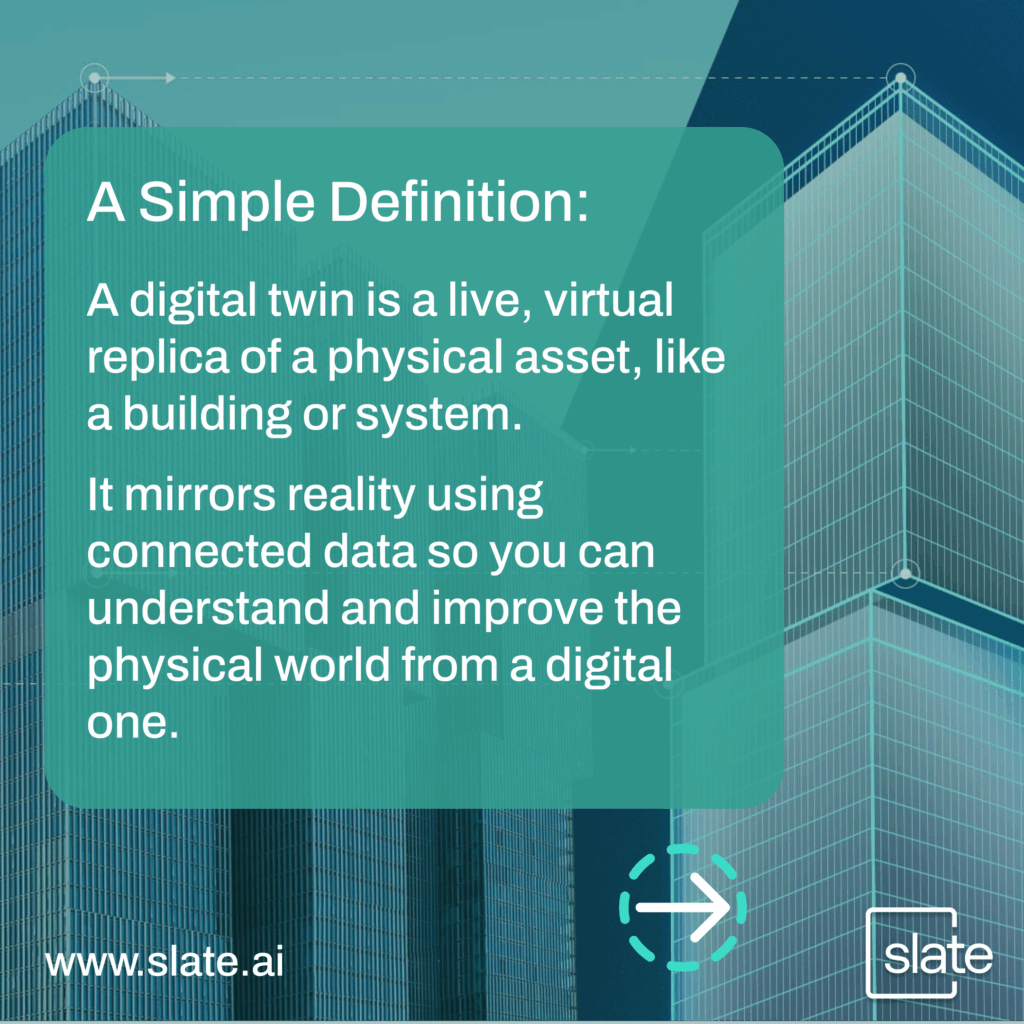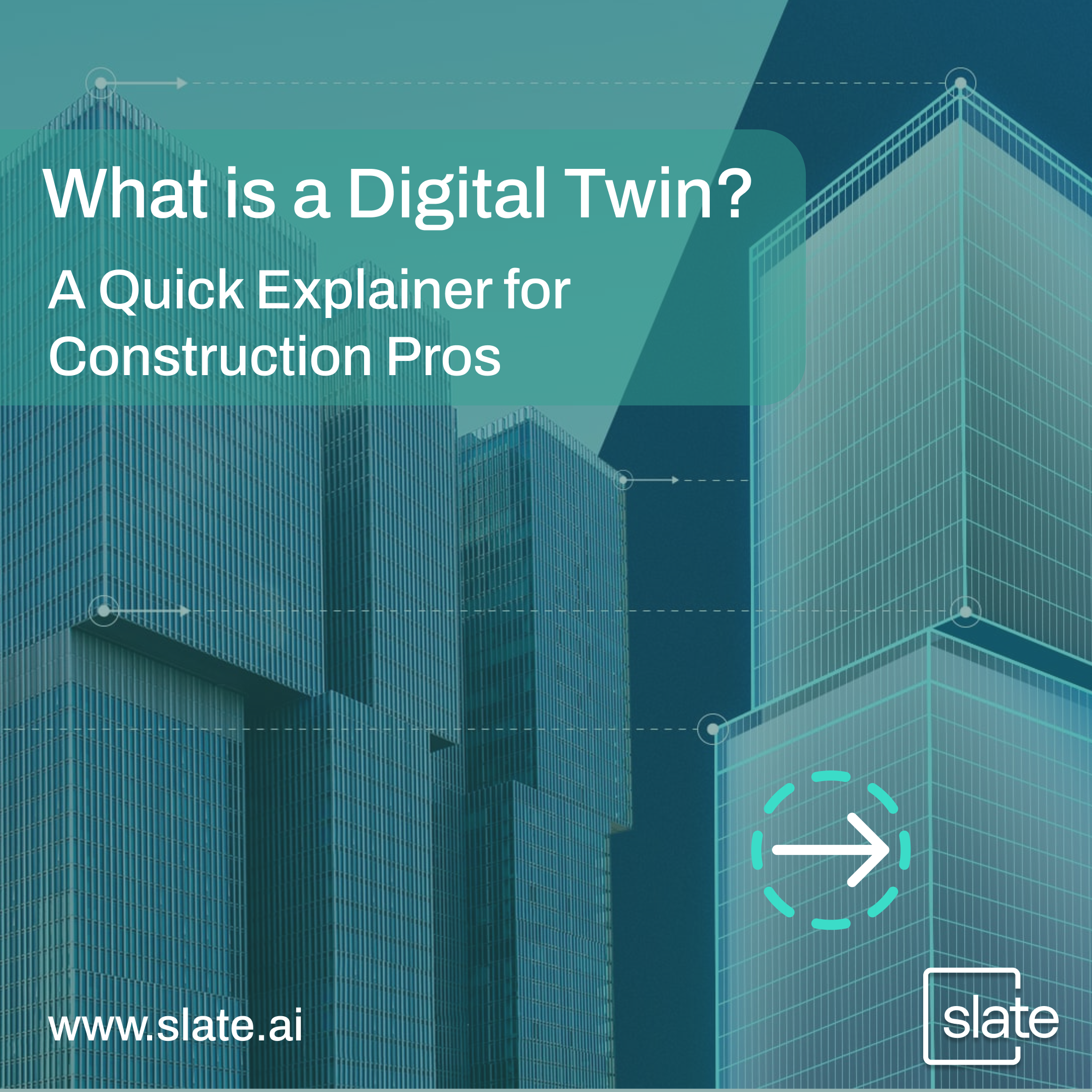Digital twins are changing the way project teams make decisions.
In construction, every decision matters. The right choice at the right time can keep a project on schedule and within budget. The wrong one can lead to costly delays and rework.
By creating a live, connected replica of a physical asset, digital twins give you real-time visibility into what is happening on site and what is likely to happen next. They bridge the gap between design, construction, and operations, turning data into decisions.
In this guide, we will explore:
- What a digital twin is
- What powers a digital twin
- Why digital twins matter in construction
1. What is a Digital Twin?
A digital twin is a living, virtual model of a physical asset such as a building, bridge, or system.
It stays connected to its real-world counterpart through live data streams, so changes in the field are reflected in the model almost instantly.
This makes it very different from a static BIM model. BIM is an important foundation, but once design is complete, it often becomes a snapshot in time. A digital twin continues to evolve throughout the project lifecycle.
By linking the digital model to the physical project, teams can:
- Make proactive, informed decisions
- Track performance in real time
- Spot potential issues before they escalate
- Simulate scenarios to test solutions

2. What Powers a Digital Twin?
A digital twin is only as strong as the data and systems behind it. Here are the core components that bring it to life:
BIM and 3D Models
BIM provides the detailed digital design. The digital twin builds on this, keeping the model alive with real-time updates as the project moves from design to construction to operations.
Project Documents
Drawings, schedules, submittals, RFIs, contracts, and specifications all feed into the twin. This creates a single, connected source of truth that every stakeholder can rely on.
Real-Time Sensor Data
IoT sensors capture onsite conditions such as temperature, humidity, energy use, and equipment performance. This data flows into the model, keeping it aligned with actual jobsite conditions.
AI and Machine Learning Insights
Artificial intelligence processes all incoming data, identifying patterns, predicting risks, and recommending actions to keep the project on track.
When these elements work together, the digital twin becomes a living, breathing representation of the project that delivers value throughout its entire lifecycle.
3. Why Digital Twins Matter in Construction
Digital twins are not just a new tech trend. They are becoming a key part of modern construction workflows because they help teams deliver better outcomes in less time.
Reduce Risk
Real-time visibility allows teams to address issues early, reducing the likelihood of costly rework or delays.
Improve Efficiency
Connected data keeps the office and field aligned, cutting down on miscommunication and wasted effort.
Support Better Decisions
Predictive insights and simulations make it easier to compare options and choose the best approach.
Enhance Quality
Continuous feedback loops and clear visibility across trades help deliver a higher-quality finished product.
The Bottom Line
Digital twins give construction teams a clear, connected view of their projects. They evolve alongside the work, providing the insights needed to make smarter decisions every step of the way.
Whether in design, construction, or operations, adopting digital twin technology can reduce risk, improve efficiency, and raise quality standards.
If you would like to dive deeper into how digital twins can benefit your projects, explore more resources from Slate Technologies and see how connected data can transform the way you build.
Learn more about Slate Technologies and our solutions here
Check out our LinkedIn for more informational content!

